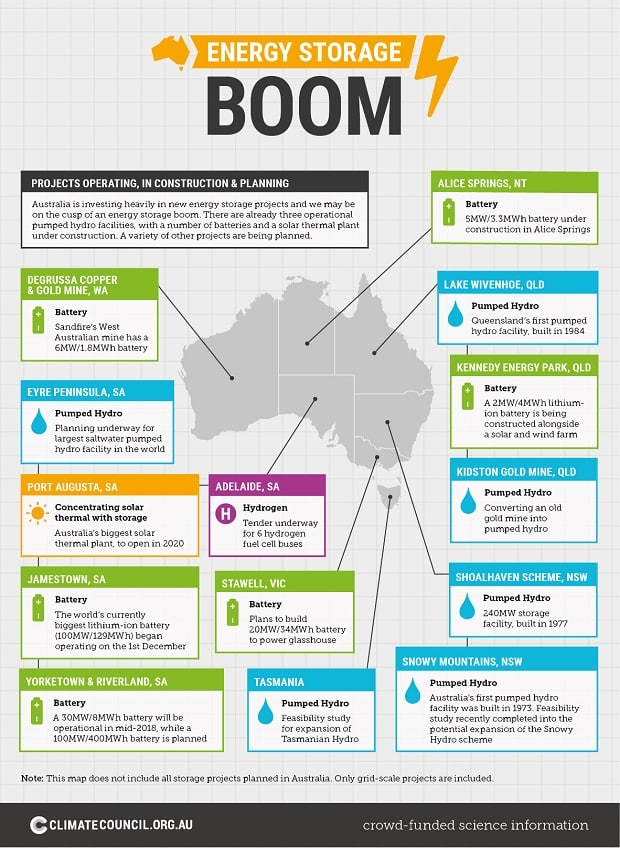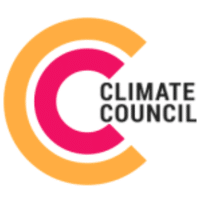Australia is on the verge of an energy storage boom, with the price of battery technologies dropping 80 percent since 2010.
That’s according to a new report from the Climate Council. It says the nation’s love affair with batteries is blooming, with storage costs tipped to halve again by 2025.
The household battery market tripled in size during 2017, adding 20,000 new installations across the country. In 2016, only 6,750 homes added battery storage.
In addition, South Australia has installed the world’s most powerful lithium-ion battery. Tesla’s 100 MW array at the Hornsdale wind farm began dispatching power a day ahead of schedule late last year. By 2020, SA plans to house a 150 MW solar thermal plant with molten salt storage generating enough heat to drive turbines.
Other states are following SA’s lead. Victoria, Queensland and the Northern Territory are also investing in grid-scale battery technology. Meanwhile, Federal, Queensland and Tasmanian governments are planning big pumped-hydro storage projects.
Falling cost of energy storage puts pressure on fossil fuels

In light of the trebling of domestic gas prices over the last five years, the council says the cost of energy storage may soon rival that of fossil fuels.
“Australia’s renewables and battery storage boom will keep the nation’s power grid fully charged, especially during extreme weather events, such as summer heatwaves,” says Climate Councillor Andrew Stock.
By 2030, half of Australia’s coal power plants will be over 40 years old. It’s estimated that the cost of building a new coal station produces a levelised cost of energy of $134-203/MWh. By contrast, South Australia’s planned 150 MW solar thermal plant – capable of both generating and storing energy – can deliver power at $78/MWh.
Renewable energy assets, plus storage, will buttress supply in coming years, as the nation’s fossil fueled power stations age.
“Australia could reach 50 per cent renewable energy by 2030 without significant new energy storage,” the report states.
Majority of Australians embrace energy storage boom
Polling in the report finds three-quarters of Australians expect household battery systems will be commonplace within ten years.
In fat, the council warns that energy policy must keep pace with the number of homes installing battery storage to complement rooftop solar power.
“The transition to renewable energy and storage is inevitable and is happening now,” says Climate Councillor Greg Bourne.
“The only thing putting this at risk is the Federal Government’s lack of credible climate and energy policy.”












































